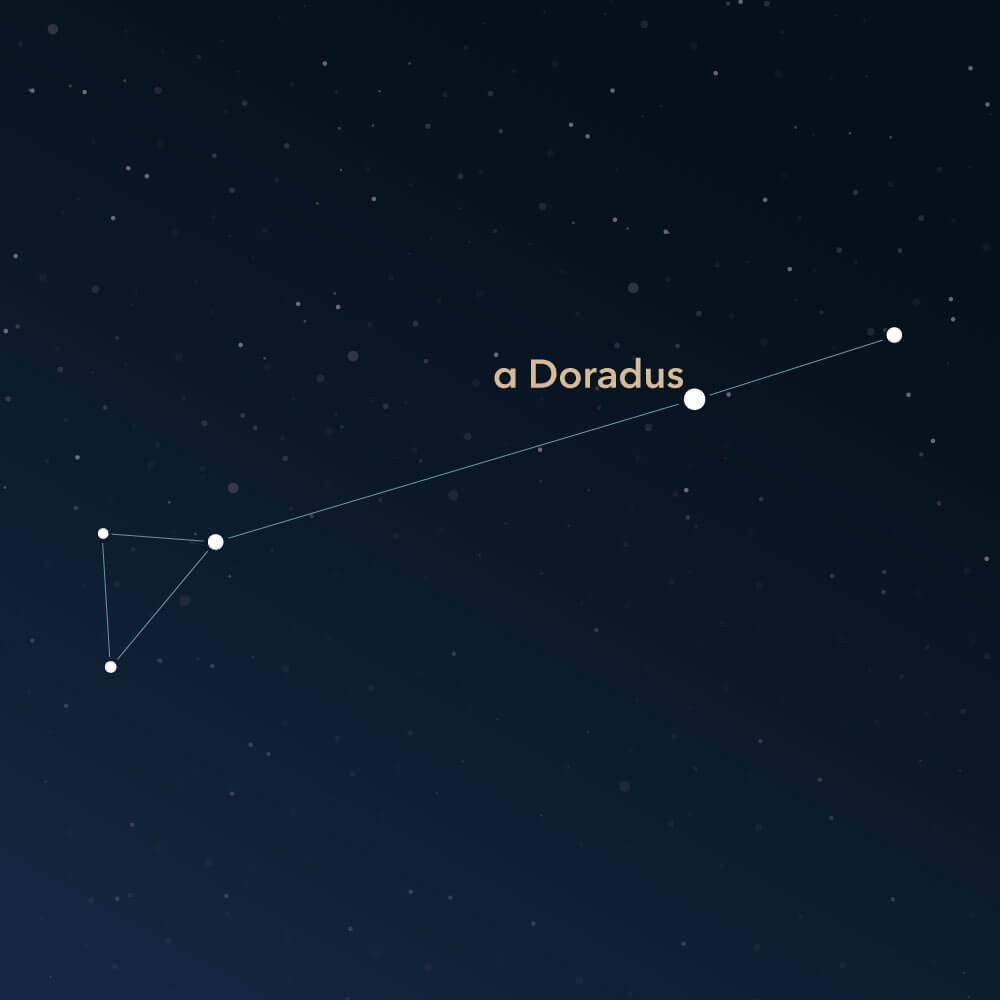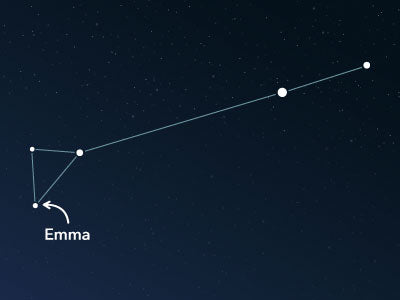The constellation Dorado
Characteristics
- Other names / Symbolism
- Doradus, Swordfish
- Hemisphere
- Southern hemisphere
- Visibility
- November - January
- Area
- 179 deg²
- Brightest star
- α Doradus (HIP number 21281)
- Specialties
- Galaxies, globular clusters, open star clusters, emission nebulae

The Dorado symbolizes a Swordfish and is a small inconspicuous constellation in the southern sky. It bears the name Dorado, which comes from Spanish. For the naming of the stars, astronomers eventually used the Latin designation, Doradus. The constellation was defined by Dutch sailors during a long journey at the end of the 16th century. There are some exciting deep-sky objects in its area.
Hemisphere, visibility, and area
The constellation Dorado lies in the southern celestial hemisphere and can be seen from the entire southern half of the earth. North of the equator, it is only fully visible in the night sky up to the 20th latitude, which includes places such as Tulum in Mexico, the southernmost island of Hawaii, or Mumbai in India.
In southern regions, the Dorado is visible almost all year round, disappearing below the horizon only from June to August. However, the best view is during November, December, and January. It is also visible in more northern regions during this period.
It stretches across the night sky for approximately 179 square degrees, ranking it 72nd in size among all the 88 constellations.
In most sky maps, the constellation is depicted with three to five stars forming a long chain. In many visualizations, the tail fin is represented by a triangle of stars.
The brightest star in Dorado is α Doradus (Alpha Doradus), with an apparent magnitude of only roughly 3.23. It is a binary star system approximately 169 light-years from earth.
Due to its faint stars and unremarkable appearance, it is not easy to locate the Dorado in the night sky. Therefore, the adjacent constellations can be a helpful guide. It is bordered by seven other constellations, including the Caelum, the Horologium, and the Reticulum. The Hydrus, the Mensa, the Volans, and the Pictor are also direct neighbors.
Specialties in the constellation
Within the sky area of the Dorado, there are a variety of different objects, including galaxies, globular clusters, open star clusters, and emission nebulae.
One particularly interesting galaxy is known as the Large Magellanic Cloud, which contains approximately 15 billion stars and other nebulous objects. This accounts for about 5% of the number of stars found in the Milky Way. It is also believed to be gravitationally bound to the Milky Way and will eventually merge with it in around 2.4 billion years.
The Large Magellanic Cloud lies at the southern border of the Mensa constellation. Its objects, such as various star clusters, can already be observed through a small telescope.

History
At the end of the 16th century, a Dutch fleet sailed to the legendary Spice Islands to establish new trade relations. During this journey, the positions of 135 stars were measured by Captain Pieter Dirkszoon Keyser and his crew.
Later Peter Plancius included the data in his sky maps and recognized twelve new constellations from these measurements. One of the constellations bore the name "Den Dorado," the goldfish or the common dolphinfish. The Dorado is a predatory fish found in tropical oceans that provided the crew with a change from their usual food.
A few years later, the constellation was included in the new star atlas as "Doradus," which is actually to correct Latin term. However, it is still more known by the name Dorado.
PublishedRead more interesting articles

An overview of all 88 constellations
Learn more about all 88 constellations and read interesting information about the mythology, visibility, and features.

Planetarium App
Discover the night sky with our planetarium app!
Available for iOS and Android.

Name a star in the constellation Dorado
Name a star in a constellation and create something that lasts for eternity.